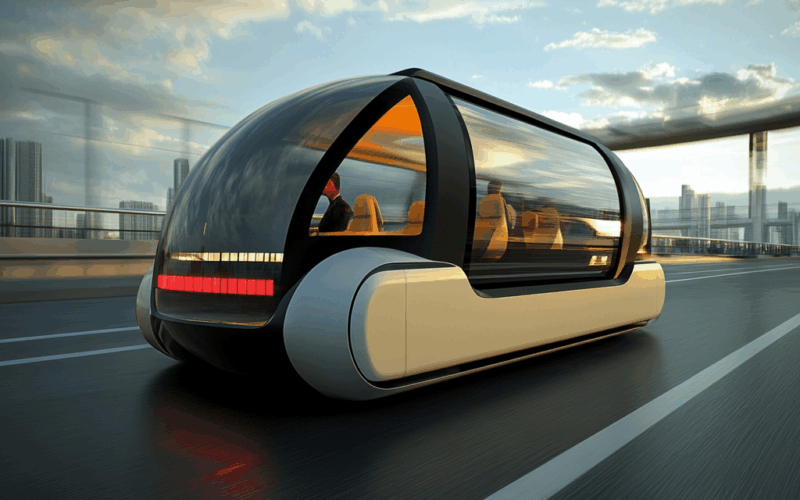The changes in the transport sector today are acquiring truly revolutionary proportions. The transition to alternative energy sources is becoming a key factor in the transformation of the industry, because on the one hand, this allows for a significant reduction in emissions of harmful substances, and on the other, it opens up new opportunities in terms of the convenience and efficiency of operating vehicles. In this regard, it is preciselynew standards, which set the rules of the game for manufacturers and users, ensuring compatibility and security.
The evolution of transport power: from gasoline to electric charge
Transition from Fossil Fuels to Electricityhas become one of the most significant trends in modern transport. Over the past decades, combustion engines, which have dominated for centuries, have gradually given way to battery-powered electric motors. This change not only affects the environment by reducing air pollution, but also fundamentally changes the structure of transport systems. Electric transport offersnew possibilities for energy management, easier maintenance and less dependence on oil.
In addition to ecology, an important factor has been the development of technologies that have made it possible to create efficient and affordable power sources for transport. Today, electric vehicles are actively being introduced into urban and regional transportation, as well as into commercial and special areas. As the number of electric vehicles grows, new operating rules are being formed, as well as standards that allow integrating different types of chargers and batteries into a single system.
Battery technologies and their impact on the development of electric transport
Modern batteries – this core of the electric transport energy system, their characteristics determine the range of the trip, the speed of charging and the overall reliability of the car. Technologies in this area are developing rapidly, offering improved indicators of capacity, speed of charge restoration and safety. Below are the key areas of development that determine the future of battery systems:
- Lithium-ion batteries— today this is the main type of battery, providing a balance between capacity, weight and cost.
- Solid state batteries— a promising technology that can improve safety and energy efficiency while reducing the risk of fire.
- Fast charging methods— allow you to reduce the time it takes to replenish energy from several hours to minutes.
- Recycling and recycling— an important aspect of sustainable development, reducing environmental impact and saving resources.
- Intelligent Battery Management— systems that optimize the charging and discharging process to extend service life.
Each of these areas makes a significant contribution to increasing the efficiency and attractiveness of electric transport.Continuous improvement of battery technologybecomes the basis for expanding the use of electric vehicles in various areas and regions.
New standards for charging infrastructure: from local solutions to global unification
For the successful dissemination of electric transport it is necessarya wide and accessible network of charging stationsHowever, simply creating charging points is not enough – it is essential to ensure their compatibility and user convenience. Standardization of charging connectors, data protocols and power levels has become a major focus of work in this area. There is now a shift from a multitude of incompatible systems to unified solutions that make life easier for both drivers and charging network operators.
The unification includes several key aspects: security standards, authentication and payment methods, and station placement requirements. In addition to the technical side, much attention is paid to the development of infrastructure in remote and rural areas, which contributes to the uniform development of the electric vehicle market and the expansion of its area of influence. This process is closely related to investment and government regulation, which emphasizes its strategic importance.
Integrating renewable energy into the food chain
Integration of renewable energy sourceswith electric transport power systems is a logical step towards sustainable development. The use of solar, wind and hydroelectric power plants can significantly reduce the carbon footprint and reduce dependence on fossil resources. Modern projects increasingly include hybrid systems, where energy from renewable sources is stored in batteries and used to recharge vehicles.
In addition, the development of energy storage technologies and smart grids allows for the optimization of resource use, reducing the load on the overall energy system and ensuring supply reliability. This approach requires integrated planning and cooperation between electricity producers, charging station operators, and end users. Ultimately, such integration facilitates the formation of new energy consumption and management models that are environmentally friendly and cost-effective.
State and industry regulation: how the rules of the new market are formed
Regulation is one of the key factors for the successful implementation of new technologies in the transport sector.Government and industry organizationsdevelop regulations that govern safety, standardization, environmental standards, and support for producers and consumers. This creates the basis for the formation of a transparent and predictable market that promotes investment growth and innovation.
Laws and programs Incentives include tax breaks, subsidies for the purchase of electric vehicles and the development of charging infrastructure, as well as requirements for environmental standards of production and operation. An important part of regulation is the creation of international agreements and the exchange of experience, which facilitates global coordination of efforts and accelerates the implementation of new standards. Thus, legislation and standardization are the foundation for the long-term and sustainable development of the transport industry.
The transition to alternative energy sources in the transport sector is not just a technological shift, but a profound transformation that changes the approach to mobility and energy in general. Electric transport With its environmental and cost-effective advantages, it is becoming a focus for both producers and consumers. But the successful development of this field depends not only on technical advances, but also on a comprehensive approach that includes standardization, integration of renewable sources and thoughtful regulation.
It is very important to understand thatmodern electric mobility market— is a complex ecosystem where innovative technologies, public policy and market mechanisms interact. The continuous development of battery technologies, the expansion of charging infrastructure and the use of “green” energy form a solid foundation for a sustainable future. At the same time, standardization becomes the key to accessibility and convenience, allowing users to move freely and use technologies without restrictions.
In addition, regulators play the role of a kind of “game master”, creating frameworks and stimulating development, which is especially important for young markets and innovative solutions. It is important that with the right interaction of all participants, it is possible to achieve an effective and harmonious transition to new technologies, minimizing social and economic risks.
Thus, the study and implementation of new approaches to powering electric transport is a guarantee not only of environmental safety, but also of technological progress, economic benefits and quality of life for future generations. In the coming years, we should expect that this area will only expand, offering increasingly sophisticated solutions and forming new standards of mobility.
The use of renewable energy sources can significantly reduce the carbon footprint, reduce dependence on fossil resources, and provide a more sustainable and environmentally friendly energy supply, which is important for long-term development.
Standardization facilitates the mass adoption of electric vehicles, ensures compatibility between different models and charging stations, reduces infrastructure development costs, and improves user convenience, which contributes to the growth of demand and the development of the industry.

